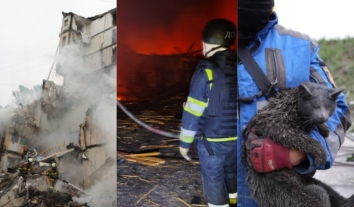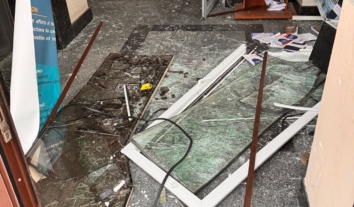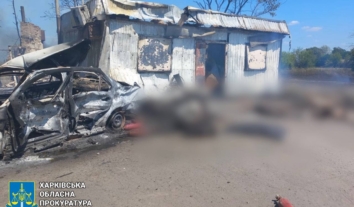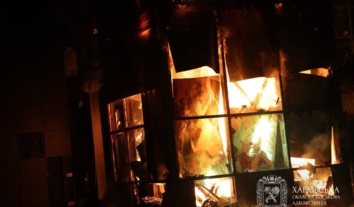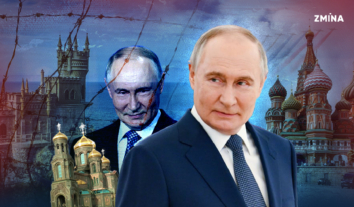Experts: Representatives of Ukrainian state and institutions use tortures
Despite the fact that Ukraine ratified the Universal Declaration of Human Rights, the European Convention on Human Rights, the UN Convention against Torture and other international instruments that expressly prohibit torture, the practice of using tortures still exists in our country.
This is evidenced by the facts and the information which have been made public during today’s discussion “Not all tortures leave traces: whether Ukraine complies with ban on torture”, organized by Amnesty International in Ukraine, Human Rights Information Centre with the support of the International “Renaissance” Foundation.
In particular, it was stressed that, according to the Ukrainian Justice Ministry, Ukraine lost 14 cases in the European Court of Human Rights in 2015 for violation of Article 3 of the European Convention (prohibition of torture). The claimants have received over 150,000 euros in compensation for moral damages and legal costs from the state budget.
In addition, as reported, the UN Subcommittee on Prevention of Torture was forced to stop their mission in Ukraine in May because of denial of access to places of detention of the Security Service of Ukraine suspected of illegal detaining and torturing people. Security officials reasoned the denial saying that weapons were stored in those places and strange people should not be on military sites.
Journalist Artem Chapay had first-hand experience of “military necessity” when he went to the town of Izium (Kharkiv region) to see what sentiment prevailed in the area, close to the conflict zone.
 “In June 2014, I was detained in Kharkiv region, where I worked as a reporter, and was brought to the ATO Headquarters, where, obviously on the command’s orders, I was interrogated by using means of physical coercion and moral torture, e.g. shooting over my ear and threats of execution… The interrogators justified that with military necessity. In particular, when I cried “You are representatives of the state of Ukraine and you violate laws,” the chief interrogator replied sarcastically: “What laws? My soldiers die here.” The Defense Ministry’s investigation resulted in nothing as it stated that they could be not its representatives, but people from the Security Service or the Interior Ministry. As people from all three organizations stayed in the ATO Headquarters then, we only know that they were representatives of the state, no matter what bodies they represented,” the journalist said.
“In June 2014, I was detained in Kharkiv region, where I worked as a reporter, and was brought to the ATO Headquarters, where, obviously on the command’s orders, I was interrogated by using means of physical coercion and moral torture, e.g. shooting over my ear and threats of execution… The interrogators justified that with military necessity. In particular, when I cried “You are representatives of the state of Ukraine and you violate laws,” the chief interrogator replied sarcastically: “What laws? My soldiers die here.” The Defense Ministry’s investigation resulted in nothing as it stated that they could be not its representatives, but people from the Security Service or the Interior Ministry. As people from all three organizations stayed in the ATO Headquarters then, we only know that they were representatives of the state, no matter what bodies they represented,” the journalist said.
There are almost 5,000 official places of detention in Ukraine – the institutions which people cannot leave on their own will. Since 2012, the detention conditions there have been being checked by the National Preventive Mechanism (NPM) established pursuant to the Optional Protocol to the UN Convention against Torture. The Ombudsperson’s representatives together with civil society monitors record the facts of torture and cruel and degrading treatment.
 “When people talk about tortures, they often think of physical violence, as for places of detention – prisons and colonies. However, the NPM monitors reveal other dimensions – inhumane and degrading treatment. Long detention without adequate lighting, sufficient air, drinking water or non-compliance with basic hygiene not only lead to health deterioration, disease and psychological problems – this is ill-treatment, often no less demeaning and destructive for a person, than deliberate infliction of physical pain. To prevent and avoid these things is the duty of the state,” Maksym Butkevych, the NPM monitor and the Chairman of Board of NGO “Without Borders”, said.
“When people talk about tortures, they often think of physical violence, as for places of detention – prisons and colonies. However, the NPM monitors reveal other dimensions – inhumane and degrading treatment. Long detention without adequate lighting, sufficient air, drinking water or non-compliance with basic hygiene not only lead to health deterioration, disease and psychological problems – this is ill-treatment, often no less demeaning and destructive for a person, than deliberate infliction of physical pain. To prevent and avoid these things is the duty of the state,” Maksym Butkevych, the NPM monitor and the Chairman of Board of NGO “Without Borders”, said.
Prosecutors often close cases over torture because of lack of traces on the body as not all tortures leave them. Sleep deprivation, threats to family members, simulation of executions often leave more injuries than physical abuse, but law enforcement officers do not want to take up a burden of proving such incidents.

Lawyer Hennadiy Tokarev helps Ukrainians, who did not get effective investigation, to seek justice at the European Court. He notes that simple tortures are the most common ones.
“The most common tortures are using handcuffs, arm-twisting, electric shocks, beating. Strangling with plastic bags and gas masks is a standard set. A plastic bottle with water is often used to beat a person on the head. This may cause concussion or even death. Exotic ways are sometimes used as, for example, twisting a person on a chair, but, fortunately, not every policeman knows how to do that. These methods usually do not leave visible traces on a body,” he said.
Investigation into torture by prosecutors is an inefficient mechanism, especially when it comes to torture used by the police, said Yuri Belousov, the Chairman of the Board of NGO “Expert Human Rights Centre”. The reason lies in the conflict of interests. On the one hand, a prosecutor controls the investigation and prosecutes a case in court, and, on the other, is obliged to respond to complaints about torture. Judges often accept such complaints as a way to avoid punishment. As a result, people, who have been tortured, do not get justice and assistance.

“Tortures are particularly dangerous because of possible complications of mental health, rather than physical consequences for a body. Once, a guy was detained within the framework of some case and policemen beat him with a plastic bottle with water on his head. The reason for his detention was a call from a stolen telephone. I had to communicate with him in a year after that. He was afraid to go out, afraid of the dark, even when he was in the apartment. He became practically a disabled person in his age of 22 years and obviously needed comprehensive mental rehabilitation, which Ukraine lacks. The victims of torture remain alone with their problems,” Belousov said.
A new independent body, which will be empowered to investigate crimes of torture, will be able to address a conflict of interest. The State Bureau of Investigation may become such a body, said Mykola Hnatovsky, the President of the European Committee for the Prevention of Torture and Inhuman or Degrading Treatment or Punishment.

“The topic of fight against impunity of law enforcement officers responsible for ill-treatment of detainees is one of the key issues in the dialogue between the European Committee for the Prevention of Torture and the Government of Ukraine. In a number of its reports, the Committee questioned the effectiveness of investigations into allegations of torture and other ill-treatment in Ukraine. The European Court of Human Rights has repeatedly acknowledged Ukraine’s failure to comply with its commitments to conduct an effective investigation into possible violations of Article 3 of the European Convention on Human Rights. Therefore, establishment and proper functioning of an independent body of investigation into crimes, which the law enforcement are accused of, is crucial. It is important that the State Bureau of Investigation becomes such a body,” he said.
Oksana Pokalchuk, the Executive Director of Amnesty International in Ukraine, agreed with him. In her opinion, it is the State Bureau of Investigation which will manage to overcome impunity and stop the shameful practice of torture.

“The State Bureau of Investigation has the potential to become a real tool that will allow to stop the practice of torture by law enforcement agencies. On the one hand, the Bureau will help to drive from the deadlock the traditional failure to investigate complaints about torture and improper behavior. On the other, as a consequence, we expect that the effective activity of this body will allow to overcome the traditional impunity and to eradicate the use of torture as an absolutely unacceptable practice in the long term,” she said.
The human rights activists underscore: Ukraine has assumed a positive obligation to prevent and investigate such cases by ratifying international instruments. Without this, it is impossible to talk about observance of prohibition of torture by the state.

